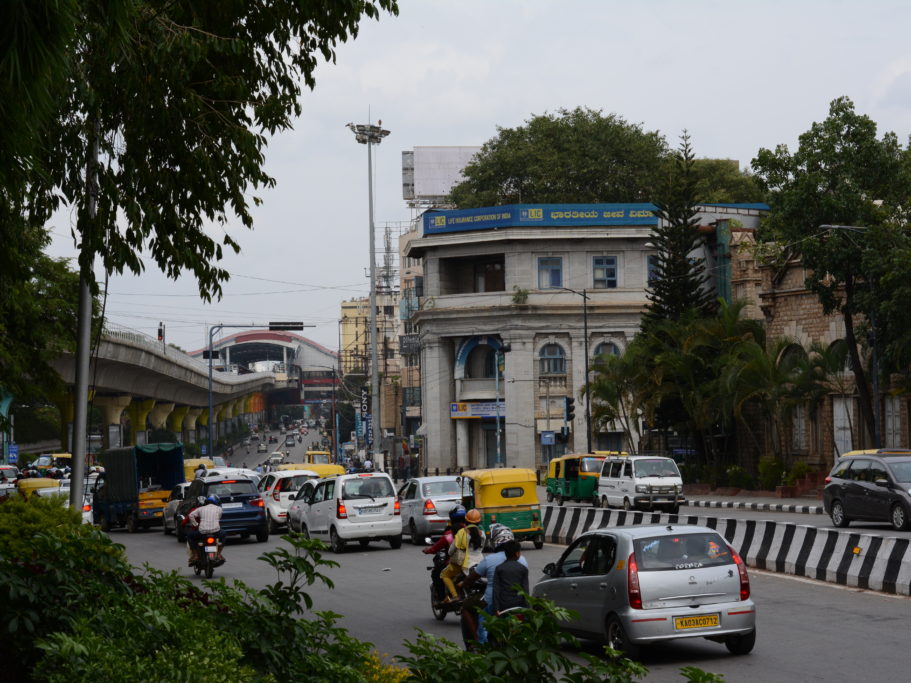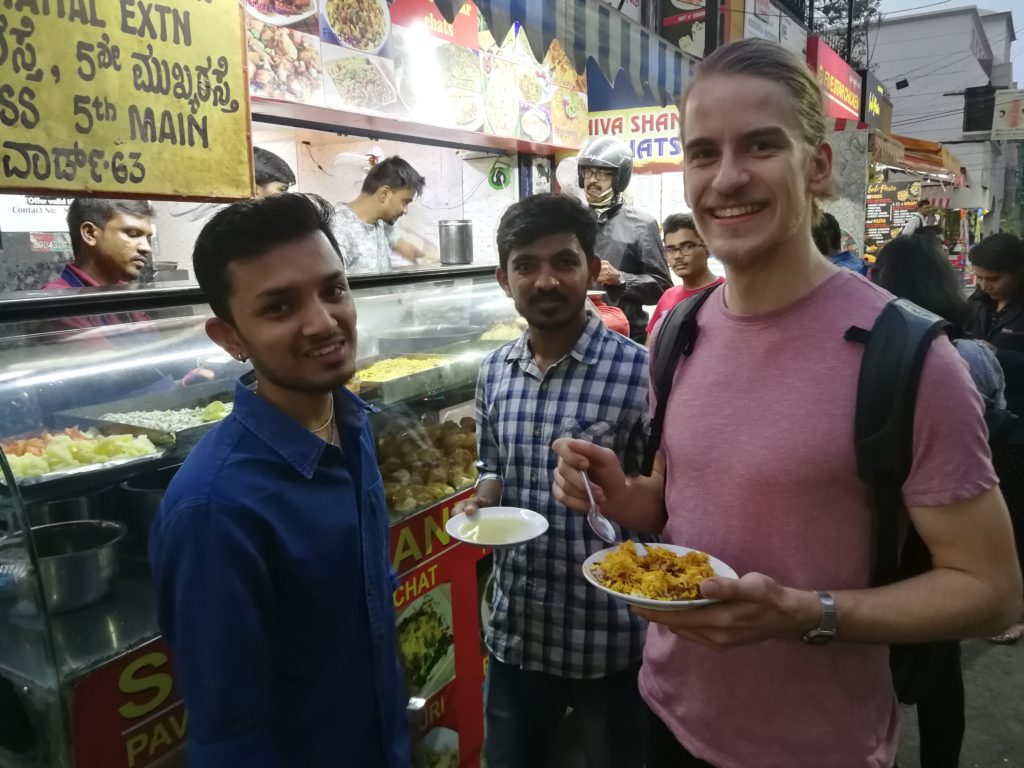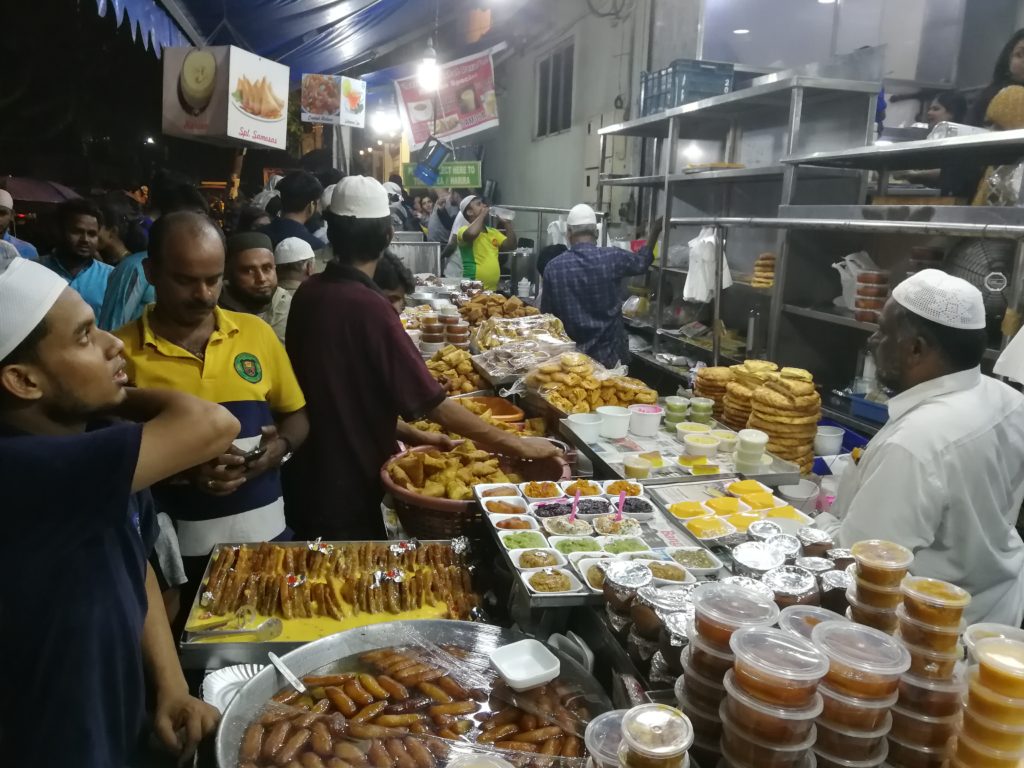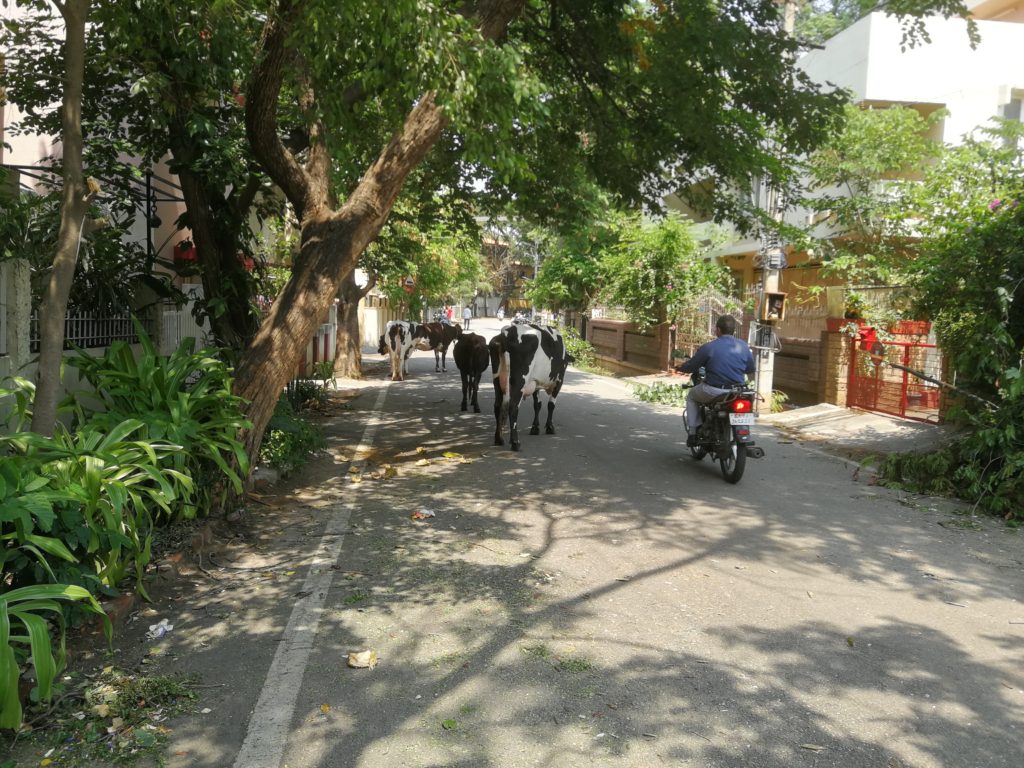In mid-March this year, I set out for the ETH Studio Bangalore to work for the artist duo Pors & Rao in one of the fastest growing cities and the IT hub of India. Soren Pors and Aparna Rao create artworks that interact with audiences through cleverly engineered mechanisms, sensors and very detailed aesthetics.
Sensory overload
by Yves Schär, 05.09.2019

Street merchant selling clothes (photo credit: Yves Schär/ETH Zurich)
Sensing Art
I came to the studio during a time when the team was in the process of creating a standardized computational module and a library of modular mechanisms and sensors. The modules would simplify the process of creating a new artwork for the artist as they can just plug together different predeveloped actuators and sensors to produce their vision. My “mission” was to create a sensor that could identify and locate motion in a room with multiple people, and fit into this modular system. While English was the main working language in the studio, it was more challenging to translate artistic ideas to engineering concepts. Still, the whole project was a success and my sensor will be used in the artwork “Wall Audience”, where 20 little figures observe a room and react to the motion of people in a room as if the visitors were watched.
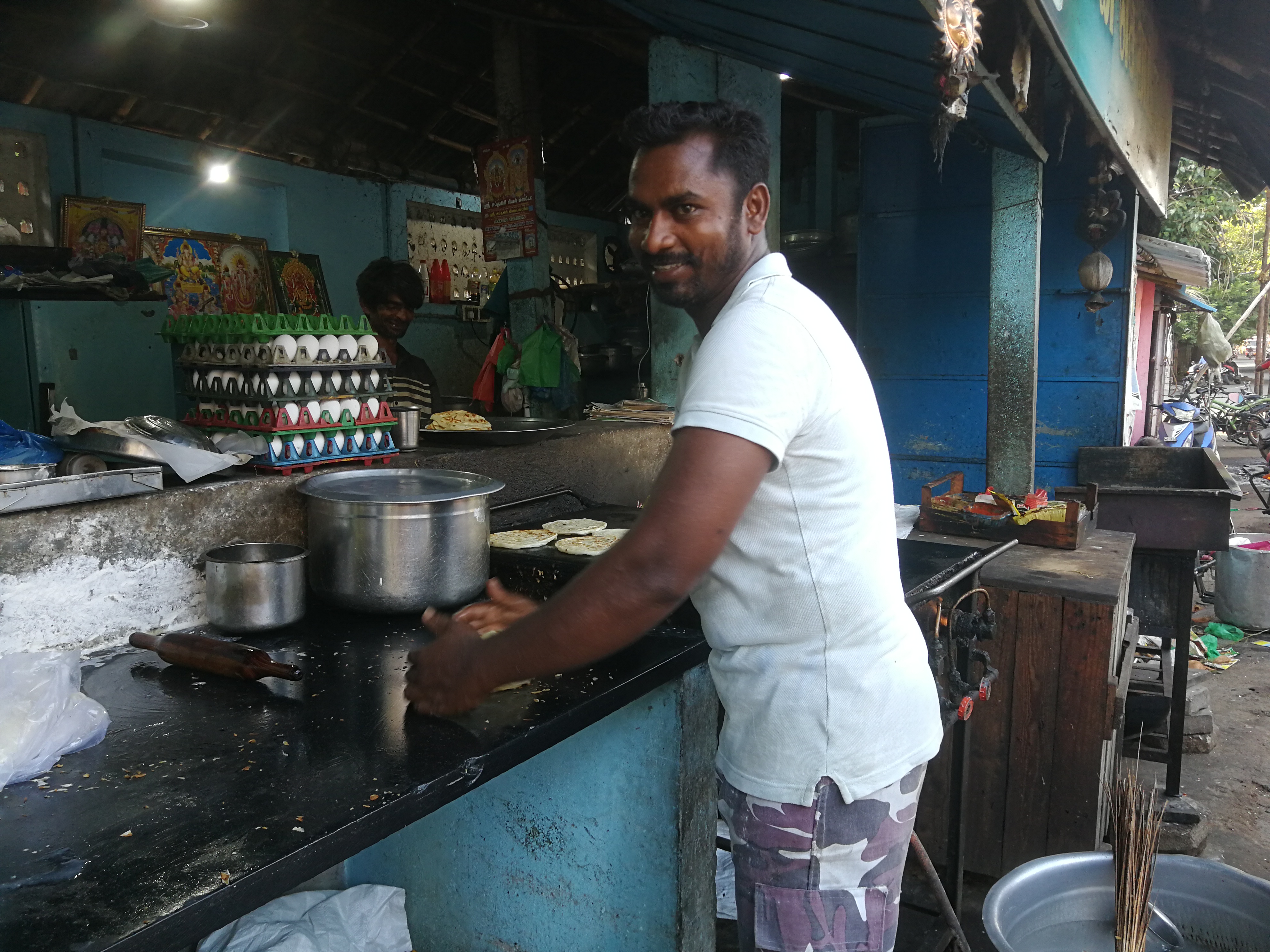
Cook preparing a Parotha (photo credit: Yves Schär/ETH Zurich)
Assault on your senses
The studio and the nearby guesthouse were situated in a rather calm and pleasantly green area. Giant trees covered the streets helping make the heat in April and May more bearable. The trees accounted for Bangalore’s earlier reputation as the “garden city” of India, of which there is unfortunately not much left today.
Even though I was prepared for some cultural differences, getting around this massive city felt spectacularly different from anything I had previously experienced. Someone I met while having lunch described India to me as, “an assault on your senses,” a most fitting description. The incomprehensible chaos on the roads with a population of over 10 million people, cars, scooters, and the typical green and yellow auto rickshaws alongside stray cows, and dogs gave me a profound sense of culture shock. As if that were not enough, incessant honking and flashing headlights are considered a normal way of communication between road users.
Street Spice and Reverse Culture Shock
Tourist attractions are rare in Bangalore, much more interesting though is that life takes place on the street: People are selling and cooking food, repairing shoes, and are tailoring and ironing shirts. Dentists, cooks, and smiths work in the public view. Some People are even getting tattoos directly on the boardwalk next to a busy street. It was impossible to grasp everything happening around me and a couple of times, I stumbled over a stray chicken or a dog because I got so distracted.
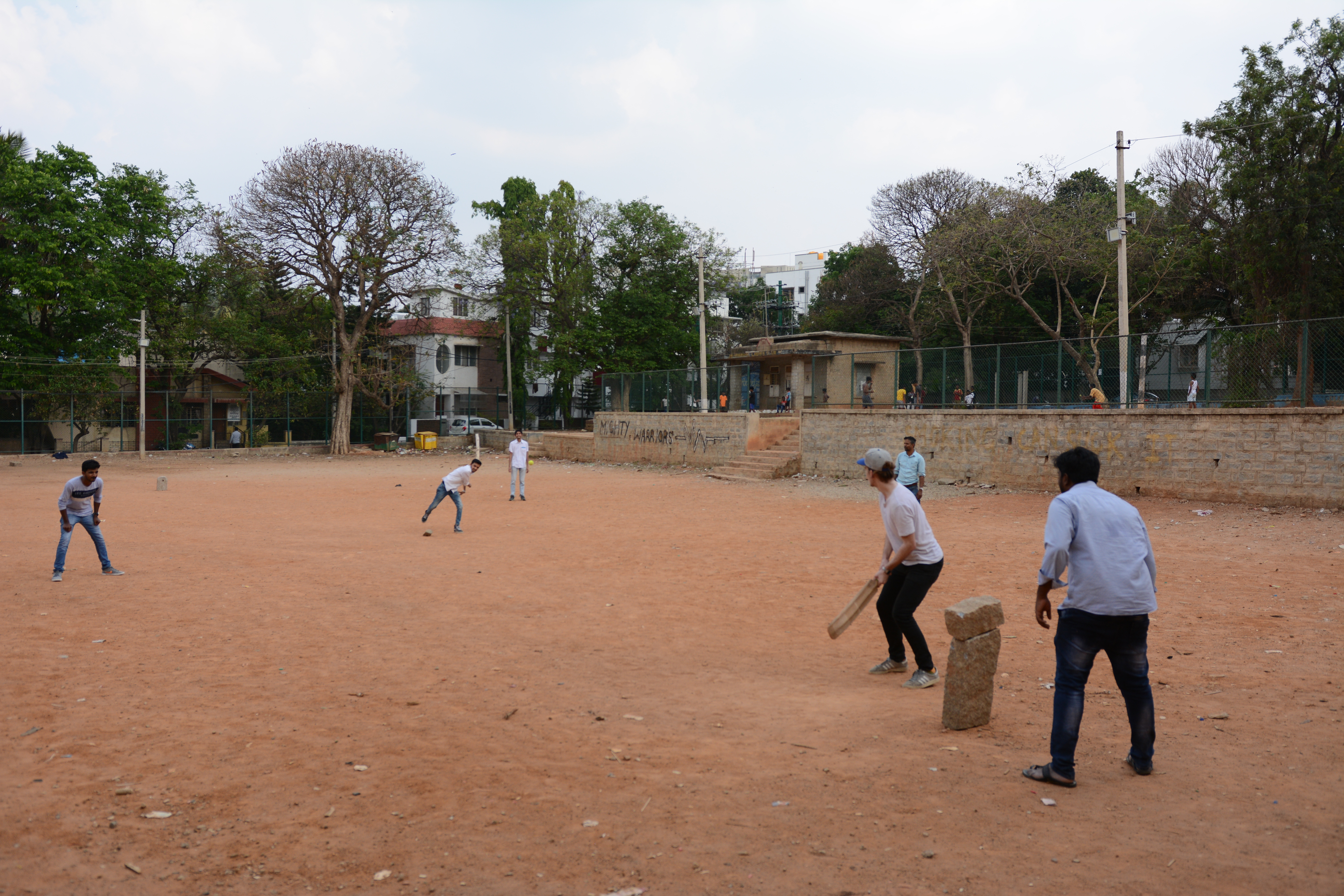
Playing Cricket with the Pors & Rao team (photo credit: Yves Schär/ETH Zurich)
This overload of the senses continued with the food. Bland is certainly an unknown word in the Indian cuisine with its rich mix of spices. Many Hindus, the majority in India, prefer a vegetarian diet, but chicken, mutton or coastal food with fish and other seafood is common too. Breakfast is as popular and good as the omnipresent “chaat,” a savory snack served in the afternoon.
Returning to Switzerland after four and a half months felt like another cultural shock. I was more accustomed to Bangalore than I realized. Even though I prefer the much calmer environment, I’m already looking forward to visiting and experiencing more of India.
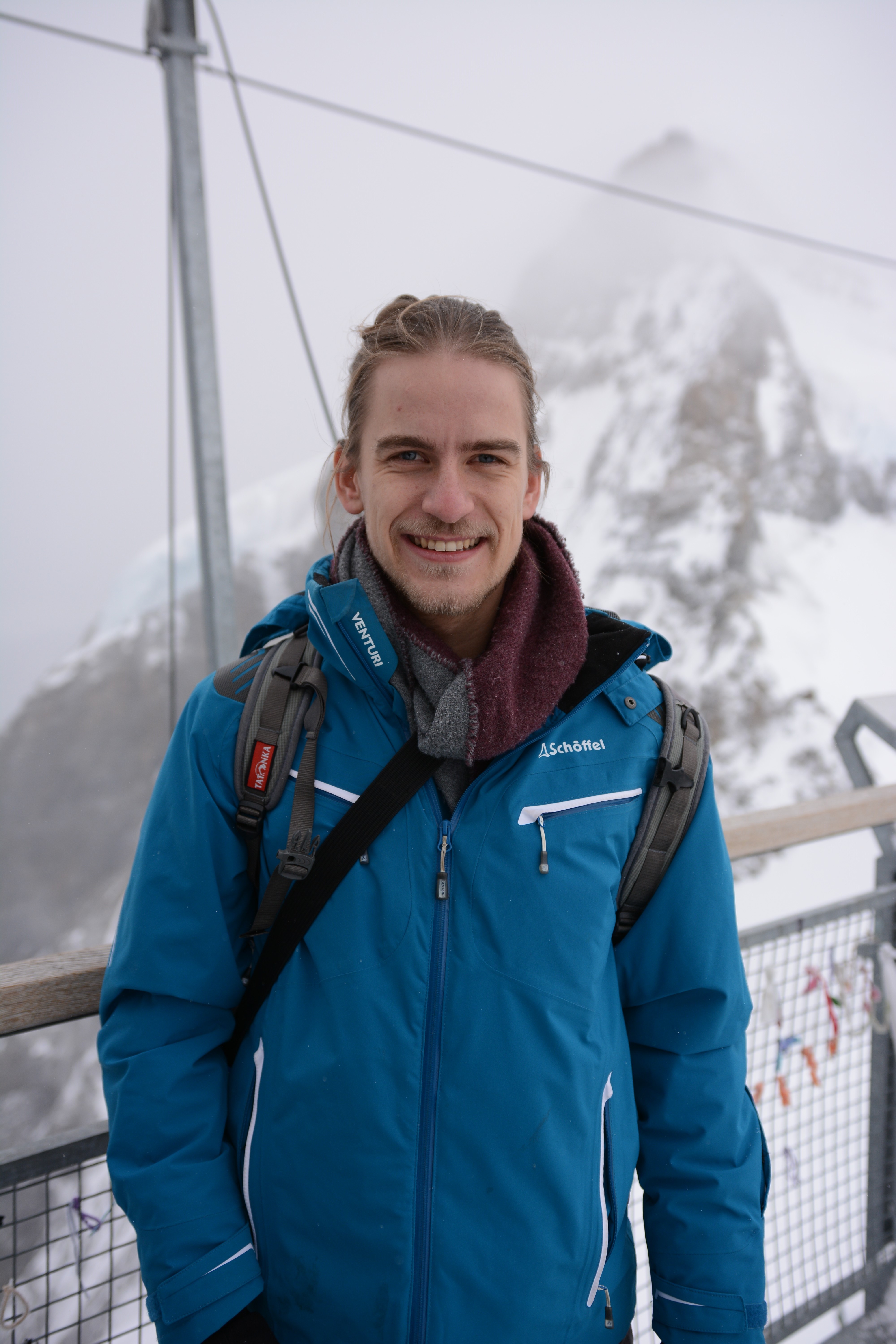
About the author
Yves Schär is pursuing a master’s degree in mechanical engineering with a focus on robotics and mechatronics at ETH Zurich.

